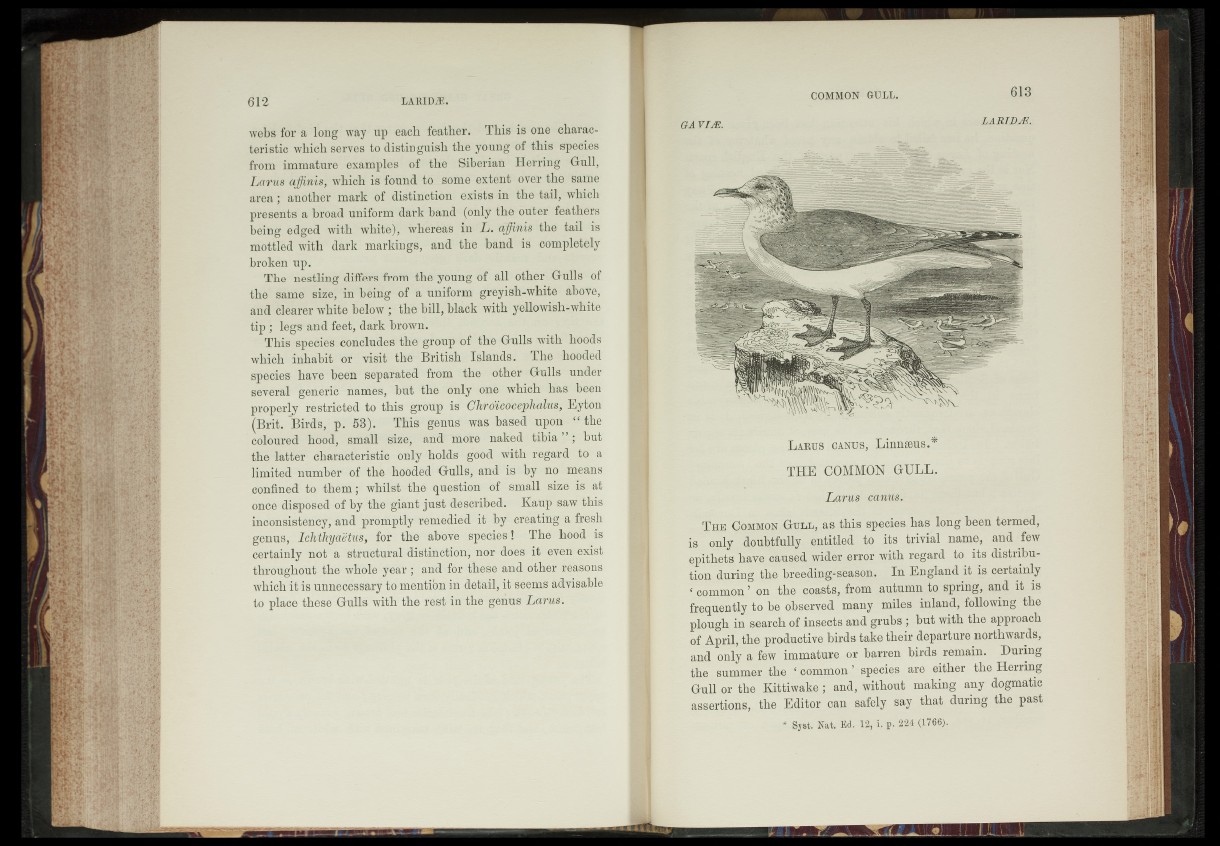
webs for a long way up each leather. This is one characteristic
which serves to distinguish the young of this species
from immature examples of the Siberian Herring Gull,
Larus affinis, which is found to some extent over the same
area ; another mark of distinction exists in the tail, which
presents a broad uniform dark band - (only the outer feathers
being edged with white)“/ whereas in\L. öffiniè the tail is
mottled with dark markings, and the band is completely
broken up.
The nestling differs from the young of all other -Gulls Of
the same size, in being Of a uniform greyish-white^ âboVe,
and clearer white below ; : the b'îll, black with yfellowish^White
tip ; legs and feet, dark brown.
~ This species .concludes the group of the Gulls with hóeds
which inhabit or visit the Brittóhb Inlands. The ’hooded
species have-been separated from the other“ "'Gulls under
several generic names, but the 'only one which has'“ been
properly restricted to this group is" ûhrô^ôokeplêéas'/’M^ion
(Brit. ’Birds, p. 58). This genus was based .upon ^She
coloured hood, small size, and' more naked tibia .-but
the latter characteristic only holds :gô'èd with regard -t'© a
limited number of the hooded Gulls, and is by no- means
confined to them; whilst -the- question1 of;- small-size is -at
oneè disposed of by the giant justifie sèribed'î Ksaup saw*-this
inconsistency, and promptly'remedied ii£%y‘ cihatihg; a fresh
genus, Ichîhyaëtus, for the -above sfpeeies-b The hood 4s
certainly not a structural distinction; fiér' dóës 'it-oven exist
throughout the whole year ; and for thê-se-and other Seasons
which it is unnecessary to mentibnlà detail,- it-séemâ IdvisaMe
to place these Gulls with the rist in the genus Larus.
Larus ^g<i§$, Linnaeus.*
Th e common g u l l .
Larus ■
j^Tug. Oo^M^GuLL4sasath^s. species has long been termed,
IS only doubtfully, .entitled to" its trivial name, and few
epithets have caused wider error with regard ^ to its distribution
during .the breeding^se^sgp.-. In England itis certainly
‘ copmon ’ on coasts, from -autumn to spring, and if is
frequently to be observed many miles inland, following the
plough in . search of insects and grubs; but with the approach
of April, the productive birds take their departure northwards,
and only a few" immature or barren birds remain. During
the summer the ‘ common-’^species are- either the Herring
Gull or the Kittiwake; and, without making any dogmatic
assertions, the’ Editor cm safely say that during the past
* SjsfeN&t. Ed. 12, i. p. 224-(1766.). '